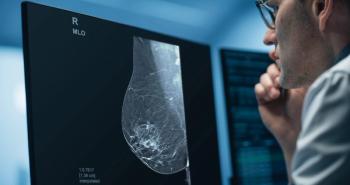
Breast coil facilitates MR diagnostic and interventional procedures
The Access Breast Coil appearing for the first time at the RSNA meeting has a multichannel phased-array architecture to enhance image quality of the breast, axillary tissue, and chest wall. The investigational device, which is being shown at the Confirma booth, has multiple receivers to power the phased-array coils, which may reduce MR imaging time, as well as a large field-of-view. It can support unilateral and bilateral imaging.
The Access Breast Coil appearing for the first time at the RSNA meeting has a multichannel phased-array architecture to enhance image quality of the breast, axillary tissue, and chest wall. The investigational device, which is being shown at the Confirma booth, has multiple receivers to power the phased-array coils, which may reduce MR imaging time, as well as a large field-of-view. It can support unilateral and bilateral imaging.
The new coil has been designed with diagnostics, intervention, and ergonomics in mind. As an open coil, it provides access to interventional procedures from cranial-caudal, lateral, and medial directions.
The Access is equipped with elements that stabilize the breast and guide needle positioning. Its interventional components can accommodate all needle gauge sizes and vacuum-assisted biopsy systems. An integrated lighting system illuminates the biopsy field.
To maximize patient comfort, the breast coil has positioning accessories that not only reduce pressure on the sternum but adjust to the patient during breast MR diagnostic studies and interventional procedures. The accessories include a headrest, armrest, and torso pad.
Confirma markets computer-aided detection systems. Its premier product for automatically processing MR breast images, CADstream, is being used clinically by more than 150 centers in the U.S.
Newsletter
Stay at the forefront of radiology with the Diagnostic Imaging newsletter, delivering the latest news, clinical insights, and imaging advancements for today’s radiologists.




























